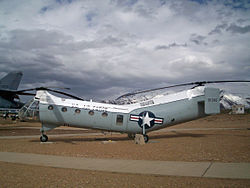
Tinker Air Force Base is a major United States Air Force base, with tenant U.S. Navy and other Department of Defense missions, located in Oklahoma City, Oklahoma in Oklahoma County, Oklahoma, adjacent to Del City and Midwest City.

The Air Force Materiel Command (AFMC) is a Major Command (MAJCOM) of the United States Air Force (USAF). AFMC was created on July 1, 1992, through the amalgamation of the former Air Force Logistics Command (AFLC) and the former Air Force Systems Command (AFSC).

Air Materiel Command (AMC) was a United States Army Air Forces and United States Air Force command. Its headquarters was located at Wright-Patterson Air Force Base, Ohio. In 1961, the command was redesignated the Air Force Logistics Command with some of its functions transferred to the new Air Force Systems Command.
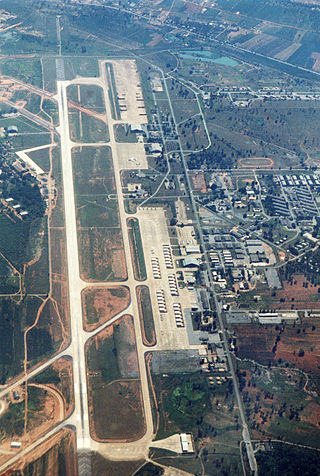
Korat Royal Thai Air Force Base is a base of the Royal Thai Air Force (RTAF) in northeast Thailand, approximately 200 km (125 mi) northeast of Bangkok and about 4 km (2.5 mi) south of the centre of the city of Nakhon Ratchasima in the Nakhon Ratchasima Province, the largest province in Thailand.

Griffiss Air Force Base is a former United States Air Force installation in the northeastern United States, located in Central New York state at Rome, about fifteen miles (25 km) northwest of Utica.

Burton M. Field is a retired United States Air Force lieutenant general. Prior to retirement he served as the deputy chief of staff for operations, plans and requirements, Headquarters United States Air Force.

The 75th Air Base Wing is a wing of the United States Air Force based out of Hill Air Force Base, Ogden Utah. It provides base operating support for the Ogden Air Logistics Complex, the 388th, 419th Fighter Wing, 84th Combat Sustainment Wing, 309th Maintenance Wing, 526th ICBM Systems Wing, 508th Aircraft Sustainment Wing and 25 associate units.
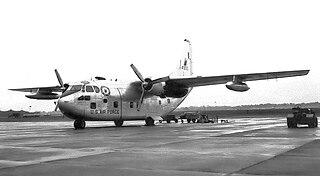
The 309th Maintenance Wing is an inactive wing of the United States Air Force last based at Hill Air Force Base, Utah. On July 12, 2012 it was inactivated and its function became part of the Ogden Air Logistics Complex.

The 388th Fighter Wing (388FW) is a United States Air Force unit assigned to the Air Combat Command Fifteenth Air Force. The unit is stationed at Hill Air Force Base, Utah.
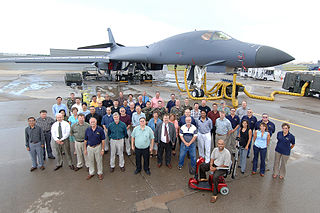
The 327th Aircraft Sustainment Wing is an inactive wing of the United States Air Force last based at Tinker Air Force Base, Oklahoma. It was last assigned to Air Force Materiel Command's Oklahoma City Air Logistics Center.

The 508th Aerospace Sustainment Wing was a wing of the United States Air Force based at Hill Air Force Base, Utah. It was activated in 2005, after being formed by the consolidation of two units in 1984.

The 542nd Combat Sustainment Wing, sometimes written as 542d Combat Sustainment Wing, is an inactive wing of the United States Air Force last stationed at Robins Air Force Base, Georgia. It was inactivated in June 2010.
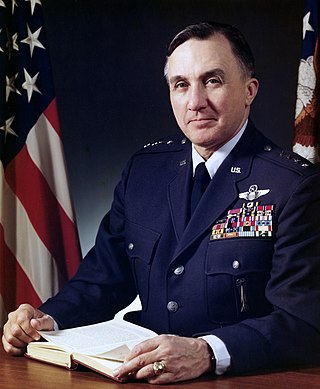
Bryce Poe II was a United States Air Force four-star general who served as Commander, Air Force Logistics Command (COMAFLC) from 1978 to 1981.

The 421st Fighter Squadron is part of the 388th Fighter Wing at Hill Air Force Base, Utah. It operates the Lockheed Martin F-35A aircraft conducting air superiority missions. The squadron is one of the most decorated fighter squadrons in the United States Air Force, being awarded three Presidential Unit Citations and seven Air Force Outstanding Unit Awards for Valor in Combat.

The 563rd Flying Training Squadron is an inactive United States Air Force unit. It was part of the 12th Flying Training Wing at Randolph Air Force Base, Texas, where it operated the Boeing T-43 Bobcat conducting navigator training until inactivating on 19 November 2010.

The Warner Robins Air Logistics Complex (WR-ALC), through about 7,000 employees at Robins Air Force Base, Georgia, provides depot maintenance, engineering support and software development to major weapon systems [F-15, C-5, C-130, C-17 and Special Operations Forces (SOF) aircraft]. The Complex achieves command objectives providing a capability/capacity to support peacetime maintenance requirements, wartime emergency demands, aircraft battle damage repair and a ready source of maintenance of critical items.

The 84th Combat Sustainment Group is an inactive United States Air Force (USAF) group last assigned to the 84th Combat Sustainment Wing at Hill Air Force Base, Utah, where it was inactivated in 2010. The group was formed in 1942 as the 84th Bombardment Group, one of the first dive bomber units in the United States Army Air Corps and tested the Vultee Vengeance, proving that aircraft unsuitable as a dive bomber. As an Operational Training Unit, it was the parent for several other bombardment groups, but from 1943 until it was disbanded in 1944, trained replacement aircrews as a Replacement Training Unit designated the 84th Fighter-Bomber Group.

The 388th Operations Group is the flying component of the 388th Fighter Wing, assigned to the Air Combat Command Twelfth Air Force. The group is stationed at Hill Air Force Base, Utah.

Robins Air Force Base is a major United States Air Force installation located in Houston County, Georgia, United States. The base is located just east of the city of Warner Robins, 18 mi (29 km) south-southeast of Macon and approximately 100 mi (160 km) south-southeast of Atlanta, Georgia. The base is named in honor of Brig Gen Augustine Warner Robins, the Air Force's "father of logistics". The base is the single largest industrial complex in Georgia, employing a workforce of over 25,584 civilian, contractor, and military members.

The 545th Test Group is an inactive group of the United States Air Force. It was organized at Hill Air Force Base, Utah as the 6545th Test Group in January 1979 to manage the Utah Test and Training Range and the development of unmanned aerial vehicles. In 1994, it transferred its flight testing mission to Ogden Air Logistics Center, and in 1996 the 388th Fighter Wing assumed its range management, and the group was inactivated.
Note: Much of this text in an early version of this article was taken from pages on the Hill Air Force Base Website, which as a work of the U.S. Government is presumed to be a public domain resource. That information was supplemented by:






